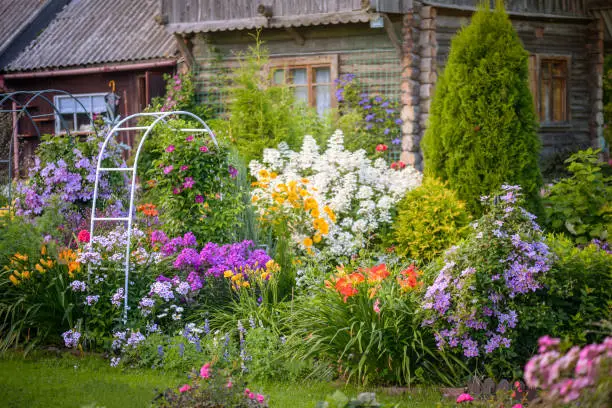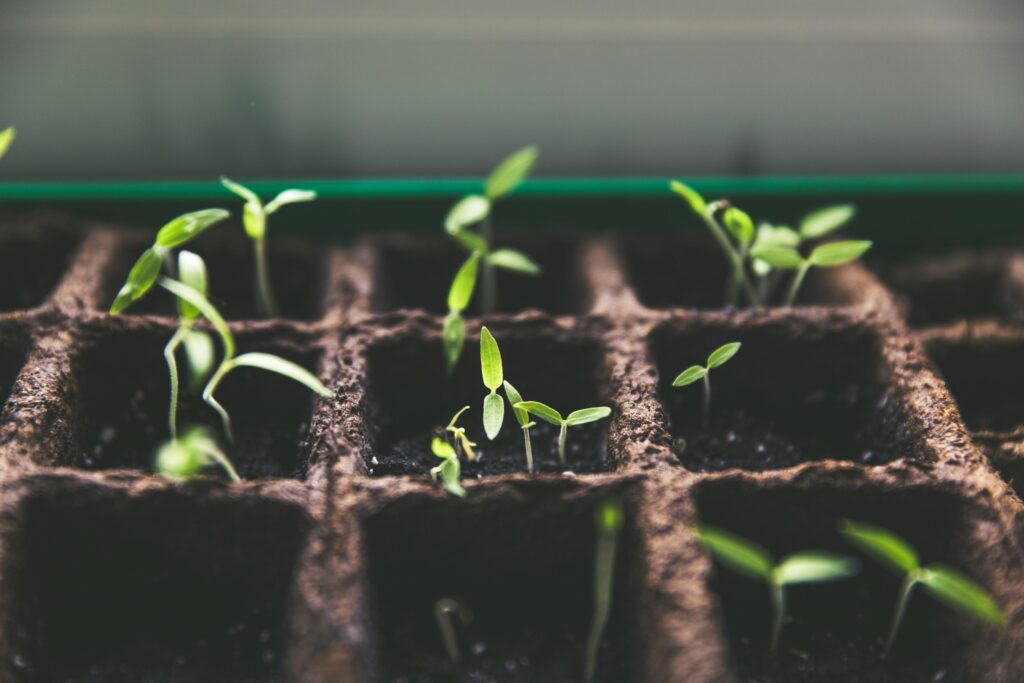
Hi there, dear readers! Imagine coming out into your backyard to see a neat, elegant, and useful contemporary garden. A contemporary garden is an artistic fusion of design, construction, and natural beauty—not just a gathering of plants. Modern gardens with well-considered vegetation, simple forms, and understated aesthetics may transform any outdoor area into a fashionable meeting place or a quiet haven.
The main components of a contemporary garden will be discussed in this article along with ideas on how to design your own and stress the need of using elegant natural materials. From plant selections to hardscaping, we will walk you through the process of creating a contemporary garden fit for your area and way of life. This book is for you whether your search is for a lush, contemporary haven or a low-maintenance outdoor space. Let’s explore the realm of contemporary landscape design.
- Specifying a Modern Garden
Modern gardens are mostly about minimalism, utility, and neat appearance. Unlike conventional gardens that could stress wild, unbridled development, a contemporary garden stresses form and order. Consider geometric forms, crisp lines, and a colour palette free of bias. Modern landscape design emphasises the harmony between softscaping and hardscaping, wherein simple plant beds, stone patios, and concrete walks live together. When you start planning your contemporary garden, give great attention to the general arrangement. Since every component should have a use—for beauty, utility, or both—planning is very vital. Recall, in a contemporary garden, less frequently is more. - Including minimalistic design
Any contemporary garden comes from minimalism first. The concept is to cut away extra and concentrate on basics. Select a few important plants and things instead of packing the area too full-of. Using simple, unassuming materials like concrete or wooden paths and subdued outdoor furniture can help to create a calm environment that seems large and clutter-free. Using repetition is a common practice in simple landscape design. Whether via hardscape elements or plant arrangement, repeating patterns helps to establish visual consistency and strengthens the impression of order that contemporary gardens go for.
- Modern Look with Hardscaping
A contemporary garden is greatly shaped by hardscaping. Think about employing flat surfaces like concrete or stone instead of conventional flower beds or too complex patterns. Think of adding elevated planters or clean-edged borders created from stones or steel. Another stylish touch is adding a streamlined water feature—such as a modern fountain or reflecting pool. In a contemporary landscape, hardscaping’s simplicity and utility provide structure without dominating the natural features.
- Selecting the Correct Plants
Choose plants for your contemporary garden that accentuate the simple lines and ordered sense of your area. Architectural shapes and little care make succulents, decorative grasses, and low-maintenance shrubs appealing alternatives. To create depth, think about arranging different-textured and height-based plants. Tall grasses, for instance, may create movement; succulents’ strong, sculptural forms provide startling visual contrast. Maintaining the simple, contemporary design, keep to a limited colour pallet.
- The Value of Symmetry in Garden Planning
contemporary design is typified by symmetry, and a contemporary garden reflects this as well. Symmetric arrangement of furniture, paths, and plants can help you to attain equilibrium. You may, for instance, arrange similar planters or replicate a sitting area on opposite sides of a garden walk. Symmetry helps your outdoor area seem coherent and well-considered by establishing order and peace. Even if you have a limited area, this simple approach can help your contemporary garden to seem harmonic.
- The Part Lighting Plays in a Contemporary Garden
Modern garden mood may be created or destroyed by lighting. Choose subdued, deliberate lighting to accentuate important elements as paths, plants, or sitting sections. Great choices that could improve the ambiance without being too invasive include LED lights, solar-powered lanterns, and recessed illumination. To provide a warm, welcoming glow that extends the usage of your garden into the evening, think about putting lights along the perimeter of the garden or along the sides of paths. Apart from serving purposes, soft lighting emphasises the contemporary look.
- Designing Zones inside Your Contemporary Garden
Designing separate areas for diverse uses is one of the fundamental ideas of a contemporary garden. You may include a portion for plants, an eating area, and somewhere to rest. One may divide these zones with various materials or even elevated platforms. Creating well defined areas helps you to maximise the use of your outside area. An outdoor dining set would be ideal on a concrete patio, for instance, but a corner with cushioned couches may provide a peaceful haven for reading or meditation.
- Combining indoor and outdoor areas
Many times, a contemporary garden erases the distinctions between indoor and outdoor life. One cohesive environment is created via sliding glass doors, floor to-ceiling windows, and simple patios that flow naturally from the house into the garden. This integration gives the contemporary garden the impression of being a house extension. Whether via complementary flooring materials or placement of outdoor furniture in places that reflect interior seating configurations, consider how you may make the transition from indoors to outside as seamless as possible when planning your environment.
- Modern Garden Water Features
Modern gardens might benefit much from the introduction of peace and movement provided by water elements. Without consuming too much visual space, a streamlined, basic water fountain or a tiny reflecting pool may be a focal point. Usually geometric and minimalist, modern water features let the soothing sound of water accentuate the peaceful environment of the garden. Combining water with natural elements like metal or stone can provide a contemporary, Zen-like hide-away right in your garden.
- Employing Natural Resources
Natural elements like metal, stone, and wood abound in modern gardens. These elements not only accentuate the understated design but also naturally meld the garden with the surroundings.
Modern earthy accent comes from wooden decking, stone paths, metal planters. Consider durability and how materials will change with time when selecting them; many contemporary garden designs welcome the natural ageing process of materials like metal and wood.
- Modern Garden Furniture: Tools
Furniture in a contemporary garden is simple and useful. Choose simple, clean-lined, minimalist designs created from sturdy materials such concrete, metal, or teak. Comfortable yet unobtrusive, outdoor seating should have neutral tones that complement the general architecture of the garden.
Steer clear of bulky or too detailed furnishings. Choose instead items that accentuate the clean, contemporary vibe of the area. Modern garden retreats are often created with modular seats and understated loungers.
- Green walls and vertical gardens
Vertical gardens or green walls are a clever approach to include vegetation in tiny areas without sacrificing any useful ground space. In your contemporary garden, a vertical garden may turn into a living work of art that accentuates walls or fences’ inherent beauty and texture.
Combine vertical-oriented plants, including succulents, ivy, or ferns, to create a mix. Besides saving space, vertical gardens provide your outdoor environment a contemporary, creative element.
- little upkeep Contemporary gardens
The usually low-maintenance design of a contemporary garden is among its finest features. Selecting low-maintenance plants and including hardscaping can help you enjoy your garden without having to spend too much time maintaining it. Excellent low-maintenance contemporary gardens would include a succulent, cactus, and drought-tolerant grasses. Furthermore, well located outdoor furniture and automatic watering systems help you to maintain your garden more easily and enjoyably.
- Harmony in Contemporary Garden Design
Though contemporary gardens are often connected with neutral tones, this does not imply they have to be colourless. The secret is to make deliberate, limited use of colour. Your minimalist design may come alive with a flash of colour in your plant choice, pillows, or pots. Whether you are adding strong, vivid accents or earthy greens and browns, keep to a consistent colour scheme. This limited colour usage will preserve the current look and provide character to your landscape.
- Modern Garden Sustainable Design
Modern landscape design is increasingly reflecting sustainability as a trend. Including environmentally friendly ideas like building rainwater collecting systems or utilising recycled materials can help your contemporary garden to be both fashionable and ecologically responsible.
Think about adopting permeable pavement materials, low-energy lighting, and native plants needing less water. In addition to benefiting the earth, a sustainable contemporary garden increases its attractiveness by combining modern design with environmental conscience.
Finally, your modern garden awaits.
The ideal mix of simplicity and design is found in a contemporary garden. The ideas of modern garden design—clean lines, minimalist elements, and smart plant choices—will turn your outdoor area into a contemporary haven whether you’re rebuilding a little patio or a large backyard.
Including these concepts into your garden design will provide a low-maintenance, aesthetically pleasing area that is also functionally sound. Recall that a contemporary garden is all about balance—that is, mixing elegant, organised architecture with natural components. It’s time now to begin designing your own contemporary garden and transform your outside area into a peaceful haven.
This page’s material is aimed to give direction on contemporary garden design. Climate, plant selection, and personal tastes will all affect results. If you’re not sure about including certain components into a landscape, always speak with a professional landscape designer.

